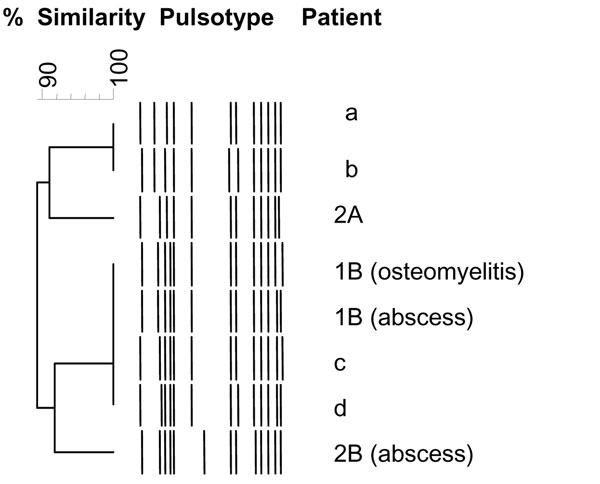Volume 13, Number 3—March 2007
Dispatch
Methicillin-susceptible, Doxycycline-resistant Staphylococcus aureus, Côte d’Ivoire
Figure

Figure. Dendogram constructed from the schematic representation of the pulsed-field gel electrophoresis types of 4 epidemic methicillin-susceptible Staphylococcus aureus (MSSA) isolates included in this study (patients 2A, 1B, and 2B); 1 strain subsequently isolated from an abscess in a soldier belonging to company A, who had been in Côte d’Ivoire in October 2005 (patient b); and 3 MSSA strains isolated from abscesses in soldiers belonging to a company other than A or B (patients a, c, d). Isolates from all patients had the following genetic characteristics: agr type 3, positive for Panton-Valentine leukocidin, negative for mecA gene, and toxin genes sea, seh, and sek. In addition, isolates from patients a and 1B were sequence type 1 and spa type 590.